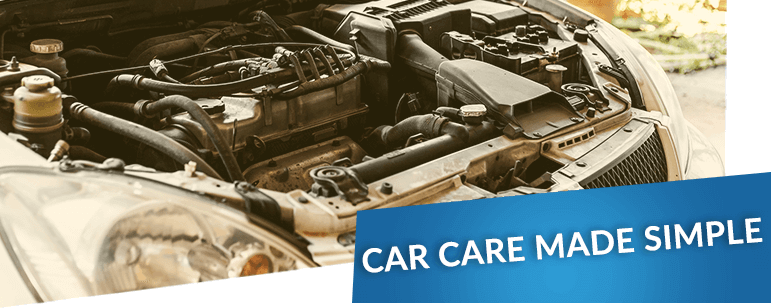Checking your car’s lights from time to time can enhance road safety, help you spot problems early on, and reduce the risk of accidents.
Your lights need to be working properly and kept clean in order to maintain visibility of the road ahead.
This is especially important when driving in the dark or in the winter months.
Page Contents
Checking Your Car’s Lights
Asking someone to help you can make the process a lot easier, so grab a friend and ensure your lights are working properly.
One of you can sit in the driver’s seat, whilst the other can check the car from outside.
Park your car on level ground in a safe location that’s away from traffic, with the parking brake engaged.
Before you start, you should turn the ignition to first position – the engine may need to be running for the process to work.
Car Lights Checklist
You should check these lights in the following order:
- Side lights
- Dipped beams
- Main beam
- Fog lights
- Front indicators (left and right)
- Brake lights
- Reversing lights
- Rear indicators (left and right)
- Hazard lights
If you’ve noticed that any of the lights aren’t working, are dim, or are flickering, you should have them replaced as soon as possible.
Not least because your car will fail its MOT if any of the bulbs or lights aren’t working.
Side Lights
To check the side lights, walk around the car and check that the lights on the front and rear of the vehicle are illuminated.
Your side lights – also known as parking lights - are usually next to the headlights.
With the lights turned on, the person walking around the car should check that the side lights are at an appropriate brightness and are beaming evenly.
If you don’t have someone helping you, you can turn the lights on and apply the handbrake.
With the gearstick in neutral, exit the vehicle and check your side lights.
Dipped Beams
Walk to the front of your car to check both dipped beams are working properly, like you did with the side lights.
These lights should be equally bright and correctly aligned.
Your dipped headlights are important for helping you see the road at night and in poor weather, so you should have any faulty bulbs replaced.
Main Beam
Full beams help you see when driving in dark conditions and are extremely bright.
That’s why you shouldn’t look directly at them during the check and should turn them on in a dark environment such as a garage.
Check your main beam is shining evenly from both sides of your car.
You should have any broken or dull bulbs replaced.
Fog Lights
Your fog lights help you see when driving in gloomy weather, but should only be used when fog reduces your visibility by around 329 feet (100 metres).
Like full beams, you should check your fog lights in a dark garage.
Turn on your fog lights and walk to the front and the rear of your car to check they are working properly.
Front Indicators (Left and Right)
Activate the left and right indicators and walk to the front of the car to check the lights flash correctly on each side.
Brake Lights
Your brake lights can let other drivers know you’re slowing down, so you should check all your brake lights at least once a week.
Have someone stand behind your car whilst you press the brake pedal to let you know if your brake lights are working.
The brake lights should all come on at an equal level of brightness.
If your brake lights aren’t working properly, this could indicate that a bulb has burned out or the brake light wiring switch is broken.
You could receive a £60 fine and three points on your licence if the police pull you over if your brake lights aren’t working, so make sure you have them replaced as soon as possible.
You may be given 14 days to fix the fault and provide proof it has been fixed if this is the case – and your car may even be taken of the road immediately.
Reversing Lights
Your car’s reversing lights are there to let others know when you’re about to reverse, which is especially important when parking.
Keep the car stationary and put it into reverse gear to check that the rear lights are white and bright.
Rear Indicators (Left and Right)
Repeat the same process for the front indicators, with the rear indicators.
These lights should flash brightly and consistently on both sides.
Hazard Lights
Your hazard lights are there to let other road users know your car has broken down, so you should check these lights are working regularly.
Press the hazard warning light button and check that all four indicators are flashing at the same rate and brightness.
You shouldn’t need to start the engine to turn on the hazard lights.
Your hazard lights won’t work as effectively if the indicator bulbs have blown.
If you notice that any of your bulbs or lights need to be replaced, book a fitting at a professional garage.








No comments yet
Leave a comment